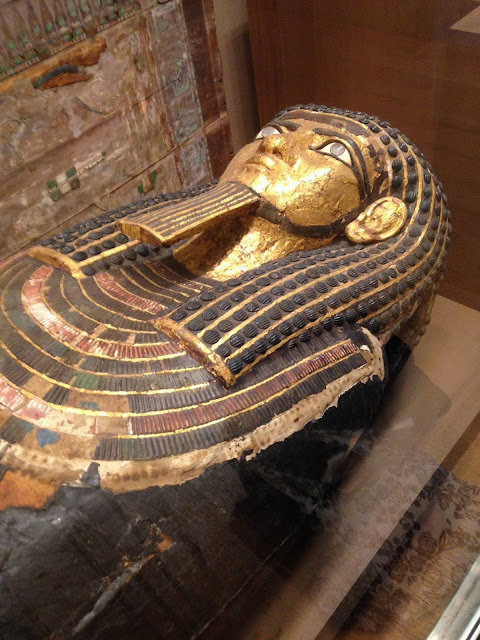Day 417 - Painting on various supports
May 11, 2025
Going to the museum only a few hours before my car service was scheduled to take me to JFK for my flight seemed crazy enough, even when I decided to save a few minutes by cabbing over to the East Side. When I discovered that 81st Street was blocked off between Columbus and Central Park West, necessitating a long (and costly) detour, I thought briefly about just going back home. But I wanted to get to one more gallery before a three-week hiatus set in, and I was able to do that, although my visit to that gallery was very abbreviated
The theme of Gallery 640 is painting on different “supports” - that is, media other than canvas, including copper, wood, plaster as is fresco painting), and stone. On display are works from different countries that span the period from about 1330 to 1860. One I particularly like is an oil on copper painting, measuring about 24 inches high and 16 inches high, by Domenichino (Domenico Zampieri), a Bologna-born painter (yet another one!) whose dates are 1581-1641. The painting is entitled “Landscape with Moses and the Burning Bush.” Moses in the foreground shields his eyes from the bush’s bright flames, while the sheep he’s guarding graze peacefully behind him. The landscape is equally serene - and unlike anything to be seen in the Holy Lnad - an aquamarine lake bordered by a walled town and a fortress in the middle distance, with craggy mountings in the far distance. More like Como than Kinneret, I’d say. The colors of the lake, the cerulean sky, the golden flames, and Moses’ red mantle are all brilliant, an effect, I read, made possible by copper’s smooth surface.
Another work catches my eye because it’s such a wonderful example of trompe l’oeil. The artist, Piat Joseph Sauvage, a Flemish painter who lived around the turn of the 19th century. painted "Nymph and Putti: Nymph with a Wreath and Putti with Garlands and Flowers" in oil on slate to imitate classical bas relief. The painter’s use of highlights to make various body parts stand out is truly masterful.
But why, oh why, does the gallery need a politically correct wall sign about all this? That sign notes that by the 1590s, most painters preferred to work on canvas because it was less costly, easier to obtain, and more portable than other media. “The close association between oil on canvas and the European tradition led ot its adoption as a signifier of fine art,” the sign continues, adding, “In many cases it supplanted other traditions - such as paintings on paper, linen, or bark [!] - in a form of cultural imperialism as artists sought to compete in the global art market.” The sign, at least to me, seems to slight the achievements of the European painters represented in these galleries. They did produce fine art, after all; the museum itself is testimony to the fact that so did other cultures and epochs.





Comments
Post a Comment